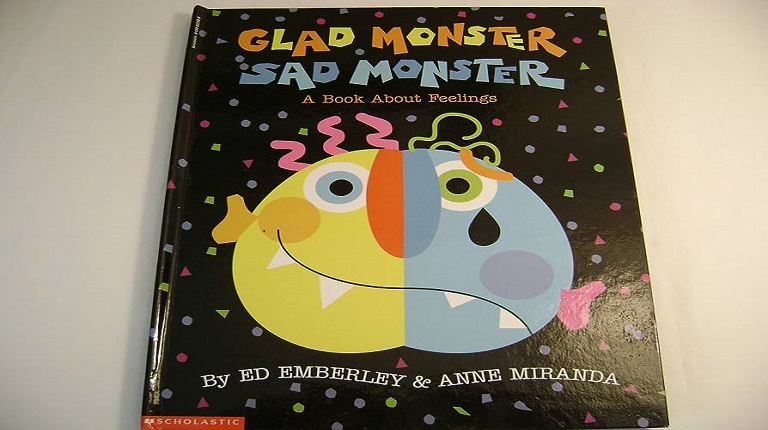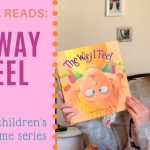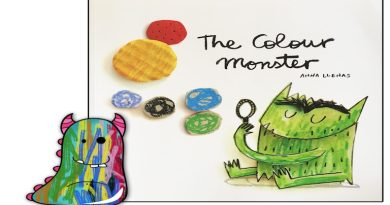“Glad Monster- Sad Monster” By Ed Emberley and Anne Miranda
Glad Monster, Sad Monster is a delightful children’s book written by Ed Emberley and Anne Miranda. This whimsical tale follows the journey of various monsters as they express their emotions in different situations. With its vibrant illustrations and relatable characters, this book serves as an excellent tool for teaching young readers about feelings and how to manage them.
Ed Emberley’s distinctive art style truly brings the Glad Monster and Sad Monster to life on every page. The vivid colors and playful shapes capture the attention of children while also conveying the range of emotions experienced by each character. As kids explore the pages, they can easily identify with these monsters’ changing moods, allowing for valuable discussions about their own feelings.
Anne Miranda’s simple yet engaging storytelling further enhances the educational value of Glad Monster, Sad Monster.
Overview of Glad Monster, Sad Monster
Glad Monster, Sad Monster is a children’s book that tells the story of various monsters and their emotions. The plot revolves around a group of monsters who each experience different emotions throughout the day. The book takes readers through different scenarios and situations in which these colorful monsters feel glad, sad, mad, or scared.
One of the key themes explored in Glad Monster, Sad Monster is emotional awareness. The book aims to help young children understand and identify their own feelings by associating them with these friendly monsters. It teaches kids that it is normal to have a range of emotions and that it is important to express them appropriately.
Another important theme in the book is empathy. As readers follow the journey of each monster’s emotion, they are encouraged to empathize with their experiences. This helps foster an understanding and compassionate attitude towards others’ feelings as well.
Glad Monster, Sad Monster provides an engaging way for children to learn about emotions and develop emotional intelligence. Through its colorful illustrations and relatable characters, this book serves as a valuable tool for youngsters to navigate their own feelings and understand those of others around them.
Plot Summary: Key events and characters
The plot of Glad Monster, Sad Monster revolves around a group of colorful and expressive monsters who experience various emotions throughout the story. The key characters in this book are the monsters themselves, each representing a different emotion. For example, there is a glad monster who is always happy and cheerful, a sad monster who constantly feels down and gloomy, and other monsters who embody emotions such as scared, mad, or silly.
Throughout the book, readers are introduced to each monster and their respective emotions through vibrant illustrations and simple rhyming text. The plot follows these monsters as they navigate through different scenarios that evoke their specific emotions. Whether it’s a game of hide-and-seek that scares the scared monster or a funny joke that makes all the monsters laugh together, each character’s emotional journey is highlighted.
As the story progresses, readers get to see how different situations can cause these monsters to feel certain ways. The plot emphasizes the importance of acknowledging and expressing one’s emotions while also showing that it’s okay to feel differently from others at times. Through its relatable characters and engaging storyline, Glad Monster, Sad Monster effectively teaches young readers about recognizing and understanding their own feelings as well as empathizing with others’.
Theme 1: Dealing with emotions
In the book Glad Monster, Sad Monster by Ed Emberley and Anne Miranda, the authors explore the concept of dealing with emotions through the portrayal of different monsters experiencing various feelings. The plot follows a group of monsters as they express their emotions and cope with them in healthy ways. Each monster represents a specific emotion such as happiness, sadness, anger, or fear.
One key theme that emerges from this story is the importance of acknowledging and accepting one’s emotions. The book encourages children to understand that it is natural to experience different feelings and that it is okay to express them. By depicting monsters representing different emotions, the authors help children identify their own feelings and find ways to deal with them positively.
Another important theme highlighted in Glad Monster, Sad Monster is the idea that emotions are temporary and can change over time. Through colorful illustrations and simple language, children learn that even if they feel sad or angry at one moment, those feelings won’t last forever. This theme teaches young readers about emotional resilience and empowers them to believe in their ability to overcome negative emotions.
Overall, Glad Monster, Sad Monster provides an engaging way for children to explore and understand their own emotions while learning valuable lessons about emotional well-being. The book offers a safe space for kids to discuss their feelings openly while also promoting empathy towards others’ emotional experiences.
Theme 2: Acceptance of different emotions
In the book Glad Monster, Sad Monster by Ed Emberley and Anne Miranda, the theme of acceptance of different emotions is explored through colorful illustrations and relatable characters. The story follows a group of monsters who experience various emotions throughout their day. From feeling happy and excited to sad and scared, each monster learns that it’s okay to feel different emotions and that they should be accepted.
Through this theme, the book teaches young readers the importance of acknowledging and accepting their own feelings as well as those of others. It highlights the fact that everyone experiences a range of emotions, and it’s essential to understand and embrace them instead of suppressing or denying them. By showcasing different monsters with distinct emotional states, the authors encourage children to recognize their own feelings and express them in a healthy way.
Overall, Glad Monster, Sad Monster promotes empathy towards oneself as well as towards others’ emotional experiences. This acceptance of different emotions fosters emotional intelligence from an early age by teaching children not only how to identify various feelings but also how to respond appropriately when confronted with them. The book ultimately helps young readers navigate their own emotional landscapes while promoting understanding and compassion for others who may be experiencing different emotions at any given time.
Theme 3: Expressing emotions in healthy ways
In the book Glad Monster, Sad Monster by Ed Emberley and Anne Miranda, one of the key themes is expressing emotions in healthy ways. Throughout the story, various monsters with different emotions are introduced to young readers. Each monster represents a specific emotion such as happiness, sadness, anger, fear, and shyness. By portraying these emotions through colorful illustrations and simple text, the book encourages children to recognize and express their own feelings.
The authors demonstrate how expressing emotions in healthy ways can help individuals navigate through challenging situations. For example, when the sad monster feels downcast, he learns that shedding tears can be a helpful way to cope with his sadness. Similarly, when the angry monster gets upset and starts growling fiercely, he discovers that taking slow deep breaths can calm him down. The book teaches children that it’s normal and okay to experience a range of emotions but emphasizes the importance of finding constructive outlets for those feelings.
By teaching children to express their emotions in healthy ways at an early age, Glad Monster, Sad Monster promotes emotional intelligence and self-awareness. By doing so children will be better equipped to communicate their feelings effectively as they grow older. The book shows that acknowledging and embracing our emotions is crucial for mental well-being and helps foster healthier relationships with others. Through this theme of expressing emotions in healthy ways, young readers are encouraged to develop emotional resilience while also understanding that everyone experiences different feelings from time to time.
Conclusion: Importance of understanding and managing emotions
In the book Glad Monster, Sad Monster by Ed Emberley and Anne Miranda, the authors use colorful illustrations and simple text to teach young children about different emotions. Throughout the story, various monsters experience a range of emotions such as happiness, sadness, anger, and fear. This helps children understand that it is normal to have different emotions and that it is important to recognize and manage these feelings.
Understanding and managing emotions is crucial for both children and adults. By understanding their own emotions, individuals can better navigate through life’s challenges and make informed decisions. Additionally, being able to identify and empathize with the emotions of others promotes healthy relationships and effective communication.
Teaching children about emotions at an early age sets them up for emotional intelligence later in life. When kids learn how to identify their feelings from a young age, they develop self-awareness and are more likely to express themselves appropriately. Moreover, having a solid understanding of their own emotions helps children build resilience as they learn how to cope with difficult situations effectively.
In conclusion, Glad Monster, Sad Monster emphasizes the importance of understanding and managing emotions for both children and adults alike. By teaching young readers about various feelings through relatable monster characters, the book encourages emotional awareness from an early age. It highlights how this skill can contribute to healthy relationships, effective communication skills, decision-making abilities, self-expression capabilities,and overall emotional well-being throughout one’s life journey.












